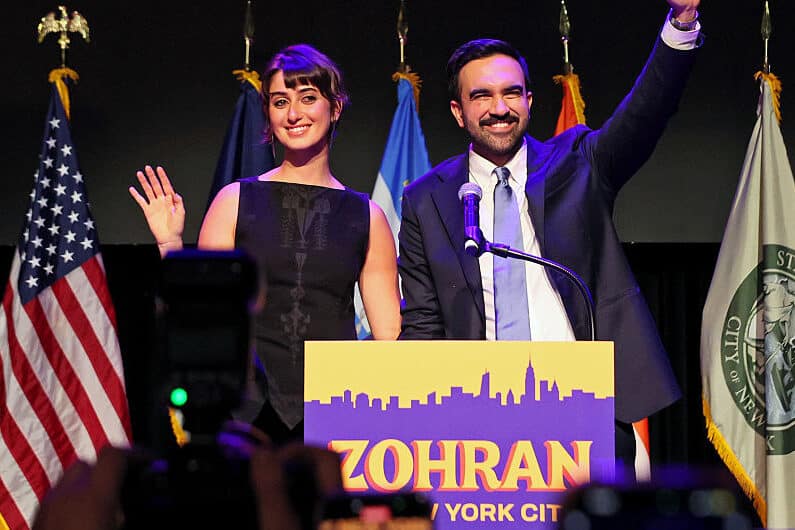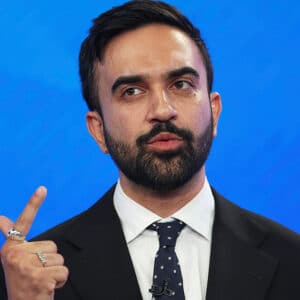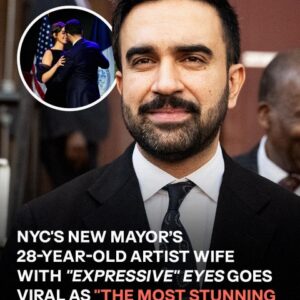They met the way a lot of modern love stories begin—on a phone screen, not a campaign stage. On Tuesday night, as New York City roared for its next mayor, 34-year-old Zohran Mamdani, the woman at his side—28-year-old artist Rama Duwaji—smiled quietly, about to make a bit of history herself.
Their first messages on Hinge in 2021 led to coffee at Qahwah House, a Yemeni spot in Brooklyn that smells like cardamom and warm sugar, then a walk through McCarren Park. On the second date, he showed her around Astoria—the district he represented then and the neighborhood that would help make him mayor. She wasn’t steeped in New York politics; he wasn’t chasing celebrity. It felt simple, ordinary, promising.
By October 2024, they were engaged. Rama posted photos alongside a picture of him as a child, writing that she “couldn’t possibly be prouder.” Days later, he launched a mayoral campaign. In December, they celebrated their nikah and engagement party in Dubai, on a rooftop washed in sunset light, white roses, and trailing greenery. The event designer summed it up as a floral installation against the skyline rather than a ceremony, and for the two of them, it was a private promise made public.
Two months after that, in February 2025, they slipped into the City Clerk’s Office in Lower Manhattan to make it official. The photo that traveled farthest was a candid on the subway at Union Square: the couple steadying themselves with one pole, Rama in a white dress and black boots, bouquet in hand, commuters oblivious that the city’s future first couple was sharing their car. Mamdani later wrote:
“Three months ago, I married the love of my life, Rama, at the City Clerk’s office. Now, right-wing trolls are trying to make this race—which should be about you—about her. Rama isn’t just my wife; she’s an incredible artist who deserves to be known on her own terms. You can critique my views, but not my family.”
Who she is, on her own terms, is already well-defined. Born in Houston, raised in Dubai from the age of nine, Rama returned to the U.S. for school, earning a degree from Virginia Commonwealth University and a master’s in illustration from the School of Visual Arts in New York. Her work—seen in places like The Cut, Vogue, The New Yorker, and the BBC—threads identity, womanhood, and displacement, with a particular focus on Middle Eastern women and the Palestinian cause. On Instagram, where a quarter-million people follow her, she’s clear about why she speaks up:
“I believe everyone has a responsibility to speak out against injustice, and art has such an ability to spread it.”
“With so many people being pushed out and silenced by fear, all I can do is use my voice to speak out about what’s happening in the US and Palestine and Syria as much as I can.”
Offline, she’ll trade pixels for clay, hand-painting blue-and-white ceramics with the same clean, narrative lines that define her illustrations. And while she avoided the archetypal “first lady in waiting” playbook—no stump speeches, no glossy cover stories—her fingerprints were all over the campaign. Staffers credit her with shaping the bright, unmistakable visual language: MetroCard yellow, Mets blue, firehouse red, a palette that felt distinctly New York. “Even if she’s not on stage,” one aide said, “she’s everywhere.”
Now they’re headed to Gracie Mansion, where Rama will become New York’s First Lady—and, notably, the first member of Gen Z in that role. Social media noticed the generational shift right away: excitement, curiosity, and a chorus of posts welcoming a creative, digitally native partner to City Hall. Whether she keeps to the studio or steps into public advocacy is her choice to make; either way, she’s already reframing what a political partner looks like in an era that values authenticity over choreography.
The love story matters because it mirrors how they plan to lead: with a blend of pragmatism and imagination, public purpose and private grounding. He talks policy—rent, transit, childcare, wages. She builds worlds—on paper, on plates, in color systems that make movements legible from a distance. Together, they’ve become a shorthand for a new kind of civic power couple: not transactional or ornamental, but collaborative.

On election night, the headlines were about firsts: first Muslim mayor, youngest in over a century. But the quieter first stood a step away, bouquet once traded for sketchbook, content to let the city have its moment while she kept her own pace. It started with a match on a dating app and a long walk in a park. Now it stretches from Brooklyn to Gracie Mansion—two people, two callings, and one shared story about what it means to build a life, and a city, with creativity, conviction, and love.





